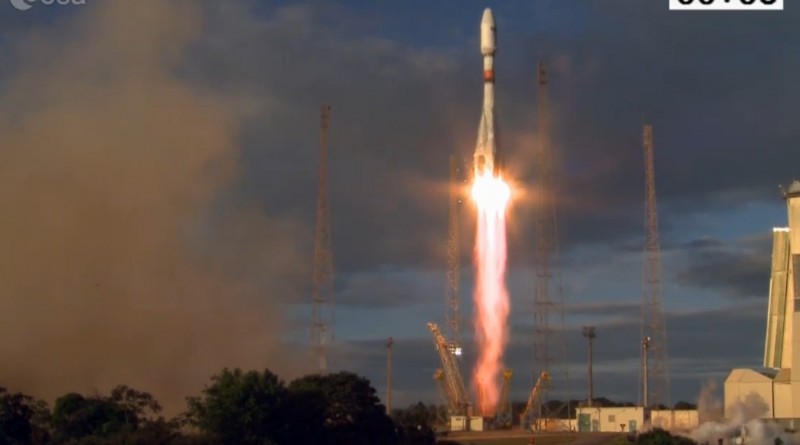Soyuz lifts Sentinel-1B Radar Satellite to Orbit, Fregat Stage completes long Multi-Orbit Flight
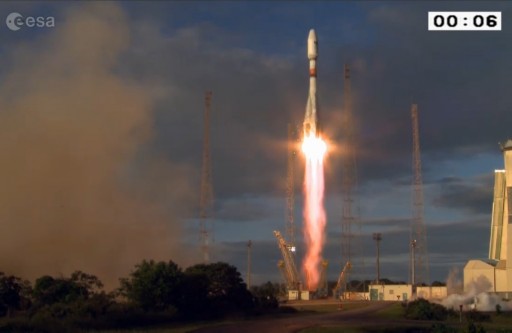
A Russian-built Soyuz rocket topped by a Fregat Upper Stage lifted off from French Guiana on Monday on a long mission to deliver Europe’s Sentinel-1B environmental monitoring satellite, the French MicroSCOPE fundamental physics experiment satellite, and three small CubeSats from European universities into custom orbits – creating a complex mission of over four hours.
The Soyuz 2-1A rocket rumbled into the evening skies over French Guiana at 21:02 UTC and checked off another successful mission – sending the Fregat-M upper stage on its way just under nine minutes after liftoff. Fregat then assumed control of a mission taking the vehicle nearly three times around the planet in a complex orbital ballet to send the satellites into three distinct orbits.
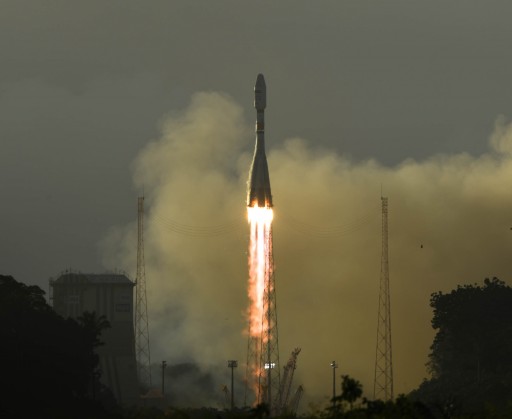
Fregat started its mission with a long burn of over ten minutes to reach a circular orbit 686 Kilometers in altitude to send the 2,164-Kilogram Sentinel-1B radar satellite on its way. The successful separation on Sentinel-1B was confirmed 23 minutes after liftoff, becoming the fourth satellite in the Copernicus Earth Observation Program to reach orbit.
After the separation of the primary payload, Fregat entered a lengthy coast phase as part of its secondary mission to deploy the MicroSCOPE satellite and the three CubeSats launched as part of ESA’s Fly Your Satellite! initiative. A maneuver completed two hours after launch lowered the vehicle’s orbit to deploy the small CubeSats into a shorter-lived orbit to ensure they re-enter the atmosphere on a reasonable time table after the completion of their short-duration technology demonstration missions.
After jettisoning its secondary payload platform, Fregat executed a pair of main engine burns to raise its orbit and set up for the separation of the 300-Kilogram MicroSCOPE satellite into an orbit over 700 Kilometers in altitude four hours after liftoff. To end its mission, Fregat conducted a deorbit maneuver to drop itself out of orbit and meet its fiery end over the South Atlantic.
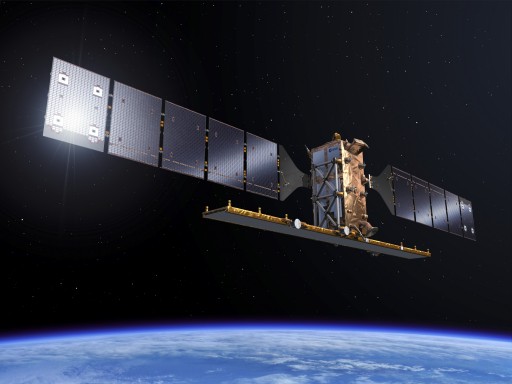
The Copernicus Satellite Program is operated by the European Commission to establish an autonomous, multi-level Earth observation capacity by launching a multitude of instruments into different orbits to be able to gather relevant Earth observation parameters for a wide user base including policy-makers, scientists and emergency responders. As a program of over 8 billion Euros, Copernicus pulls together data collected by the satellite missions, airborne measurements and ground station data to keep close watch over an ever-changing planet.
The space segment of Copernicus is comprised of six different satellites and hosted payloads, collecting data over land, the oceans and Earth’s atmosphere using a variety of sensors including radars, optical imaging payloads, altimeters, and hyperspectral instruments.
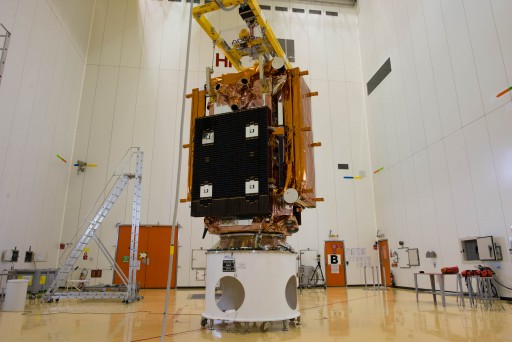
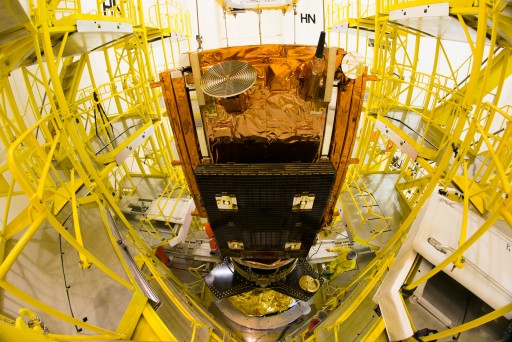
Sentinel-1B joins its twin launched in 2014 to build the constellation’s primary radar segment, hosting a 12-meter long Synthetic Aperture Radar to collect all-weather imagery of the ground at high resolutions and over a wide area. The Sentinel-1 satellites are built by Thales Alenia Space while the 5-Kilowatt radar payload was designed by Airbus Defence and Space, bouncing 5.4GHz radio pulses off the ground to collect information on ground geometry and other properties.
Data delivered by the two Sentinel-1 satellites will be put to use in a variety of areas – the observation of the maritime environment (sea-ice monitoring, oil-spill detection, surveillance of maritime transport zones) and land observations (vegetation monitoring, surface mapping, support of crisis – natural disasters like flooding and earthquakes, and humanitarian aid). The high revisit time of the two satellites will enable the study of changes on Earth’s surface and sea/land ice coverage.
The fourth satellite to join Europe’s Copernicus Satellite Fleet had to stay on the ground on its first three launch attempts when teams were forced to back out of the countdown due to weather and technical trouble. Friday and Saturday’s tries ended before the T-4-hour mark due to thunderstorms and unfavorable Upper Level Winds, not permitting the launcher to ascend through a region 2,000 to 3,500 meters in altitude. On Sunday, thunderstorms stayed off to the south and Upper Level Winds calmed down, but the launch had to be scrubbed at T-1 hour due to a problem with one of three Inertial Measurement Units aboard the Soyuz.
On Monday, winds remained calm and thunderstorms stayed off-shore, allowing teams to proceed with another launch attempt after the faulty IMU was replaced and re-testing of the new unit was performed.
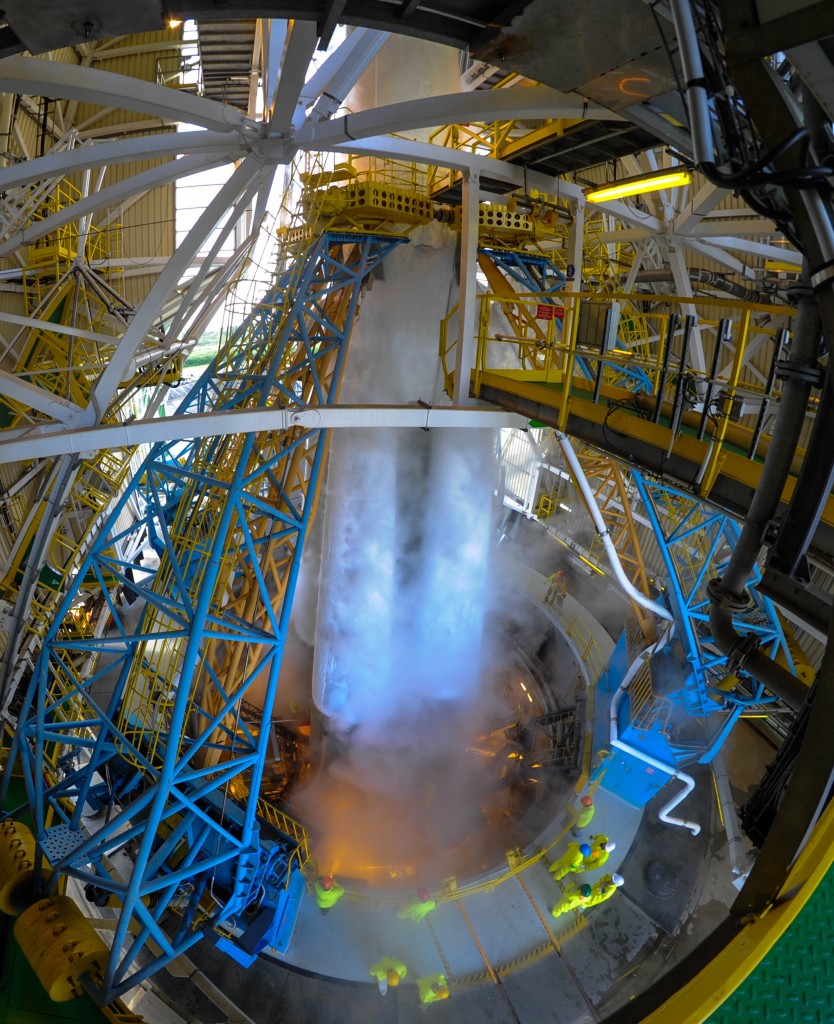
Sentinel-1B had been powered up early in the day and teams at the European Space Operations Center began watching over telemetry from the spacecraft while also checking data links with the various ground stations needed for the first days of the mission. At the ELS launch site, teams initiated Soyuz countdown operations at L-8 hours, installing batteries on the booster, completing final checks, closing out ground systems and preparing for propellant loading.
With a good weather outlook, Soyuz was cleared for fueling which started at L-4 hours and 20 minutes with the setup of Liquid Oxygen systems before the -183°C oxidizer started flowing into the vehicle’s tanks. Kerosene loading started later on and the boosters and Core Stage of the 46-meter tall launcher also received Nitrogen to serve as tank pressurant gas in flight. The fueling sequence, taking around two and a half hours to complete, was by the book and left Soyuz fully-loaded with over 274 metric tons of propellant.
Heading into the final phase of the countdown, Soyuz underwent a second round of checkouts and received its flight software while being revealed atop its pad with the large Mobile Service Gantry retracting to a safe distance for liftoff. Status Panels remained green as clocks continued to tick down and Soyuz was readied for the Automated Countdown Sequence. Sentinel-1B was switched to battery power at L-10 minutes and final checks of all stations showed everything was in readiness for liftoff.
Soyuz pushed into its Automated Countdown Sequence six minutes prior to liftoff to undergo the last critical reconfigurations for launch as computers were handed control of the countdown. The Fregat Upper Stage was switched to battery power and Soyuz purged its booster and core stage engines with nitrogen to remove any combustible substances and ensure a controlled ignition.
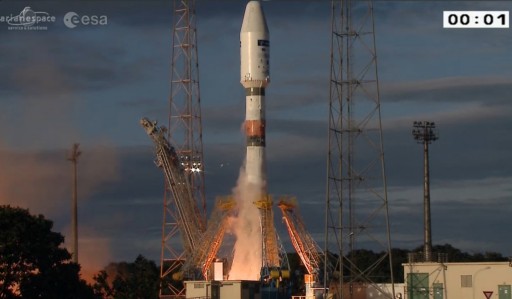
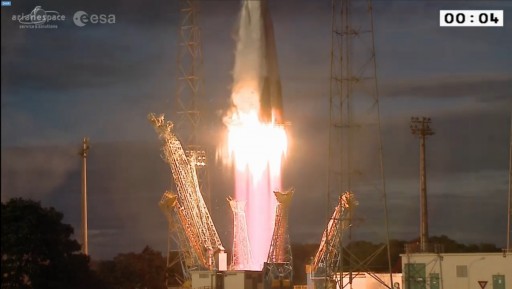
Pressurization of all 12 tanks on the vehicle was completed and Soyuz assumed full control of the countdown at T-1 minute, also transferring to internal power. The third stage umbilical mast swung away from the vehicle and Soyuz issued its ignition command when clocks hit T-17 seconds – firing up its multi-chamber RD-107A booster engines and RD-108A core stage engine.
The hydrogen-peroxide-powered turbopumps spun up to flight speeds and flames erupted from the base of the rocket as propellants were injected into the engines and Soyuz soared to a liftoff thrust of 422 metric ton force.
Blastoff occurred at the precise moment of 21:02:13 UTC and Soyuz started rising from its pad, climbing vertically under the loud thunder of its engines. The vehicle quickly started its pitch and roll maneuver to align itself with a precisely planned ascent trajectory, taking Soyuz almost straight north for a flight over the Atlantic Ocean.
Soyuz disappeared into a cloudy sky shortly after lifting off, passing the speed of sound and encountering Maximum Dynamic Pressure right around the T+1 minute mark. Burning a total of 1,600 Kilograms of propellants each second of powered flight, Soyuz started racing downrange – its four boosters doing most of the work during the initial flight phase.
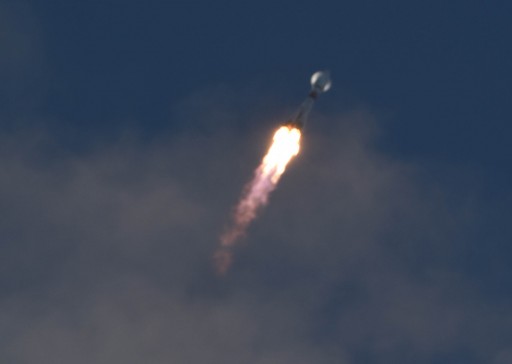
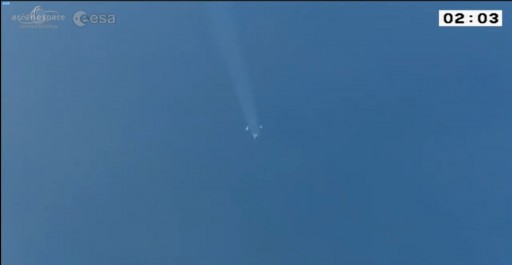
The liquid-fueled boosters shut down their engines one minute and 58 seconds into the flight after each burned 39,600 Kilograms of LOX and Kerosene, helping accelerate the Soyuz to a speed over 1.5 Kilometers per second. Immediately after shutdown, the four boosters were separated and swung outward, away from the vehicle and ultimately headed for an impact in the ocean.
With the 19.6-meter long boosters departing the vehicle, Soyuz relied on its Core Stage alone – delivering a vacuum thrust of 102 metric-ton force when heading out of the dense atmosphere. Three and a half minutes into the mission, Soyuz jettisoned its payload fairing as it had passed 102 Kilometers in altitude where aerodynamic forces could no longer harm the satellites.
Consuming 91,500 Kilograms of propellants, the Core Stage finished its burn at T+4 minutes and 45 seconds. Next was the hot staging sequence in which the Block I third stage ignited its RD-0110 engine and the 27.8-meter long Core Stage was separated moments later through the use of pyrotechnic separation systems. Soaring to a thrust of 30 metric-ton-force, the Block I third stage was in operation for exactly four minutes, tasked with lifting the Fregat upper stage into a sub-orbital trajectory.
The burn of the third stage was clean and concluded eight minutes and 46 seconds after liftoff. Separation of Fregat occurred three seconds later, marking the completion of Soyuz’s job with the third stage up for re-entry west of Greenland.
Assuming control of a long flight, Fregat started out with a stabilization maneuver ahead of settling its propellants to set up for main engine start one minute after separation. The S5.92 engine of the upper stage started up as expected, generating 2,000 Kilogram-force of thrust to boost the stack into orbit.
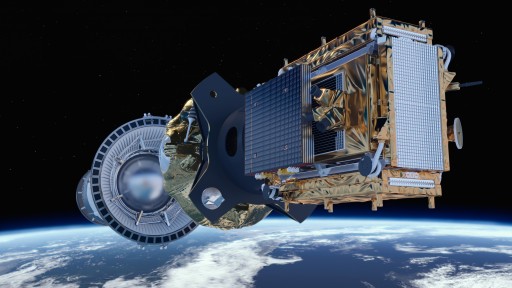
For this mission, Fregat flew in its mid-size configuration known as Fregat-M, carrying 5,750 Kilograms of hypergolic propellants to be consumed as part of five main engine burns. S5.92 can operate at two thrust settings – 19.85 Kilonewtons and a reduced thrust level of 14kN while 12 hydrazine thrusters are used to deliver three-axis attitude control.
The first Fregat burn, by far the longest of the mission, aimed for a circular orbit 686 Kilometers in altitude at an inclination of 98.2 degrees. Shutdown came after over ten and a half minutes and status telemetry delivered during the burn indicated a good performance of all onboard systems.
Sentinel-1B was sent on its way 23 minutes after liftoff, entering orbit to join the Sentinel-1A satellite in delivering timely radar imagery of Earth for a wide range of applications within the framework of the European Commission’s Copernicus program. For Sentinel-1B, the first steps in orbit will be the stabilization of its orientation, the start of communications with the ground and the deployment of its solar arrays, expected five hours after liftoff.
With the primary mission completed successfully, the flight was not over for the Fregat Upper Stage as four satellites were still on board and looking forward to delivery to two different orbital trajectories.
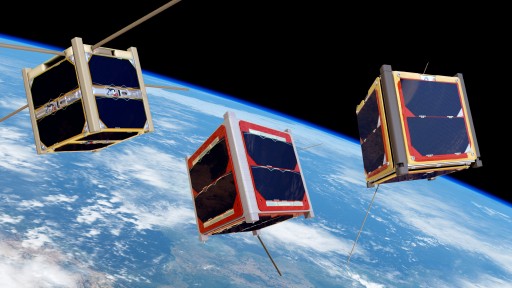
Following the typical avoidance maneuvers to move away from Sentinel-1B, Fregat entered a long coast phase of over one and a half hours. Hitting two hours into the flight, Fregat ignited its engine for just 13 seconds for an orbit-lowering maneuver, aiming for an orbit of 453 by 665 Kilometers for the release of the three CubeSat payloads.
Packed into a single container were three 10 x 10 x 10-centimeter satellites from European universities, launching as part of the European Space Agency’s Fly Your Satellite initiative.
AAUSAT-4 of Aalborg University flies a student-built receiver for the Automatic Identification System, tracking ships across the globe. Built at the University of Liege, Belgium was OUFTI-1, carrying a D-STAR radio payload to test out digital communications using an amateur radio protocol for future use in space applications. E-ST@R II from Politecnico di Torino, Italy, aims to test out an active Attitude Determination and Control Subsystem for CubeSat missions based on commercial components and materials.
The three CubeSats were sent on their way at the same time, two hours and 48 minutes after liftoff followed by the separation of the ASAP-S payload platform to reveal the MicroSCOPE satellite and leave the debris in a short-lived orbit.
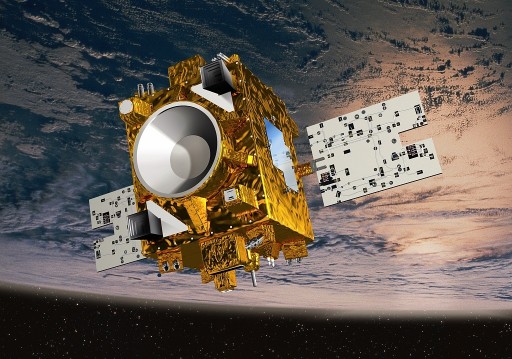
Next was a pair of engine firings, the first 12 seconds in duration at T+3 hours and 32 minutes and the second lasting 16 seconds at T+3 hours and 57 minutes, to raise the orbit to 711 Kilometers for the deployment of the 303-Kilogram MicroSCOPE satellite.
MicroSCOPE is a project of the French and European Space Agencies, carrying a fundamental physics experiment comprised of an ultra-precise differential accelerometer. The system measures the effects of Earth’s gravitational field on two objects of different material in an identical gravitational environment to gather data on the Weak Equivalence Principle (WEP) which postulates that a perfect proportionality exists between the inertial mass and the gravitational mass of a body. Resulting from the WEP is the ‘Universality of Free Fall’ which states that all objects fall with exactly the same acceleration in the same gravitational field.
MicroSCOPE was separated four hours and 52 seconds into the flight followed 15 minutes later by a 29-second deorbit maneuver of the upper stage to set up for re-entry, marking the end of the VS14 mission, the 14th launch of the Soyuz rocket from its South American launch site.

